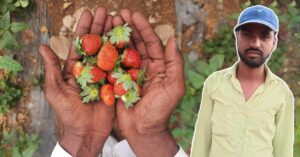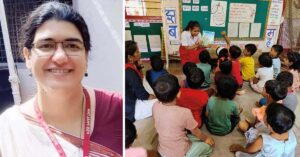You’ve Seen Warli Paintings Before. Now Get Ready To Visit The Warli Tribe & Listen To Their Music.
The amazing sights and sounds of this unique tribal village left Gangadharan Menon mesmerized and unwilling to leave. Fortunately, he left with a hopeful heart. Find out why you should head to this different world where time stands still, even though it is so close to our own chaotic world.
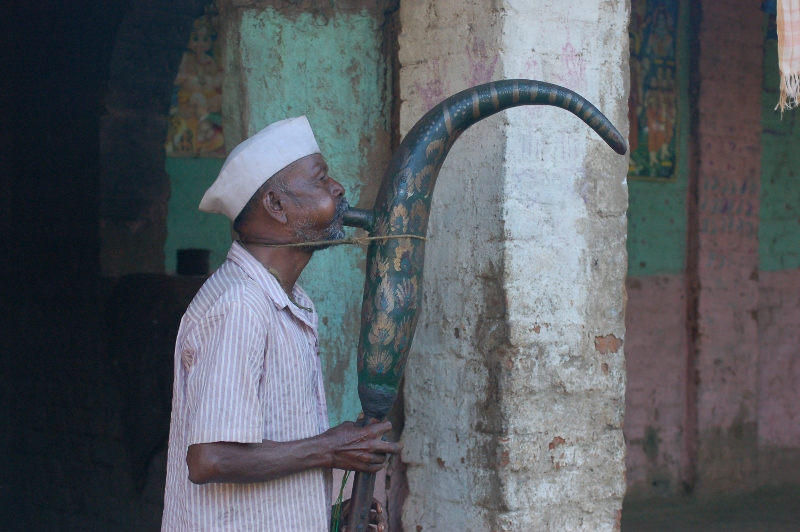
Did my car slow down on its own near a house made of karvi sticks? Or did the muscle memory of my legs press on the brake ever so lightly? Whatever be the case, I had halted at the house of Anusuyabai, my host in the adivasi village of Walvanda.

And the moment I walked into her house, the sense of déjà vu became more intense. Her disarming smile told me that I have met her somewhere; and her warm, welcome house said that I have been to this house before. I walked straight into the inviting kitchen and took intimate photographs of her utensils and fireplace, dimly lit by the skylight on the roof. That’s when I realized why Warlis paint in white on the brown walls inside their houses. It’s for the figures to catch light, as colours would have merged into the darkness.
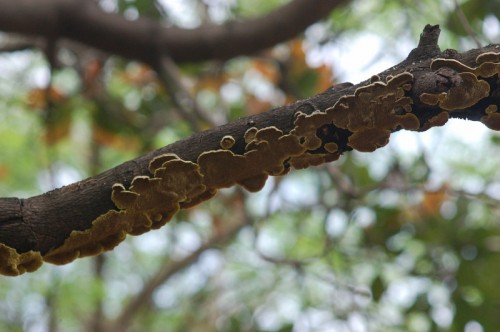
When we took part in various village activities, in different houses, it dawned on me that despite not having a caste division (they were all Warlis here), there was a clear division of labour. So there was the village blacksmith, the tailor, the cattle-rearer, the hunter-gatherer, the farmer, the fisherman, and even an expert who had the perfect antidote for treating poison bites.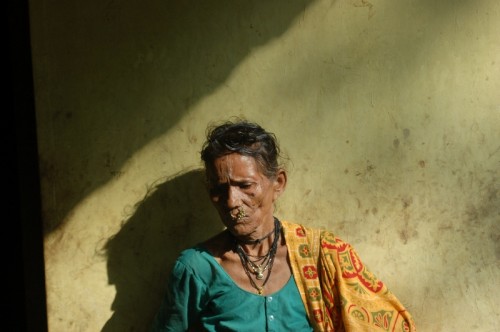
But what amazed me was that none of the implements that were being used here were ‘bought’. They were all made by them. And necessity being the mother of invention, you could see innovation at its best. So there were separate baskets made of bamboo in two unique shapes. One for catching fish, and another strange-looking one for catching crabs! Then for trapping raptors, they had a quiver that had the resin of the mahua tree. This resin would be applied on short bamboo sticks and then laid out on a straw mat in a haphazard way around the bait. The unsuspecting bird would land on the sticky sticks to lift off its prey and would get stuck on them, never to fly free again.
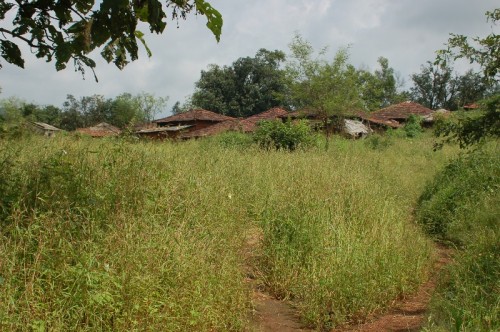
An example of their innate intelligence was seen when my wife got a bee sting. When Waman, our guide, saw her hand swelling up, in one swift move he pulled out the tiny sting. Then he went into the nearby forest from where he plucked the leaves of two local plants: Burada and Tarota. He squeezed out the juice of the leaves and applied it on the sting. And hey presto, in minutes the inflammation was gone!
In one of the typical Warli houses, the walls were made of Karvi sticks tied together and the roof was made of tiles. This house was much cooler than the concrete structures nearby which were like ovens. But somehow such simple houses were being looked down upon and were being replaced with modern monstrosities. So much for ‘progress’.
In the evening, we walked to the river. As we walked, on either side we saw golden farmlands ready for harvest. And the bizarre sight of scare-crows made of Kurkure packets. Another contribution of ‘civilization’ to the simple, pastoral life of the villages.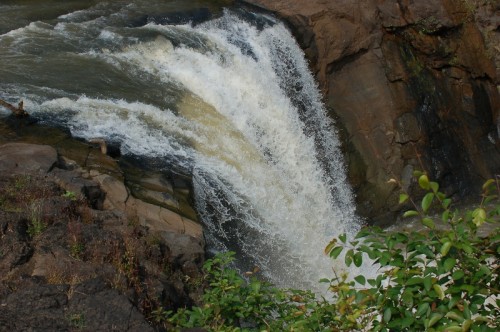
When I started looking for Warli artists in this village, I was told there were none. The last of them had taken up farming long ago. But I did get to see a Warli painting done on the wall of a house where there was a wedding recently. But it was not a work of art but more like a ritual; very rudimentary. That’s when it occurred to me that there’s no art if there’s no market. In the nearby town of Jawhar and the faraway Palghar, there’s a flourishing market for Warli paintings which makes young artists take up this art form as a source of livelihood.
And I remembered the words of Inir Pinheiro, the founder of Grassroutes that has been promoting village tourism with a missionary zeal for the last eight years. He had once told me, ‘We city folks should earn in the city and spend in the villages. That’s one way we can help the villagers earn their livelihood right here without migrating to cities looking for jobs. It’s when we come and live with them that we understand the joys of their simple living. This will even help them preserve their beautiful traditions, culture, music and art, as they greatly value our appreciation.’

This rang true all the more when I met Bhiklya Ladkya Dinda, the master of the tarpa which is a wind instrument unique to the Warlis. He was not a mere musician; he was a philosopher too. Taking a masterclass on his favourite tarpa (he had three of them), he first explained the intricacies of the two bamboo pipes. One he calls a female, and that produces treble. And the one he calls a male produces bass. Thus probably making it the only wind instrument with both treble and bass in the instrument itself! Then with a twinkle in his septuagenarian eyes, he said: ‘It needs a male and a female to make great music!’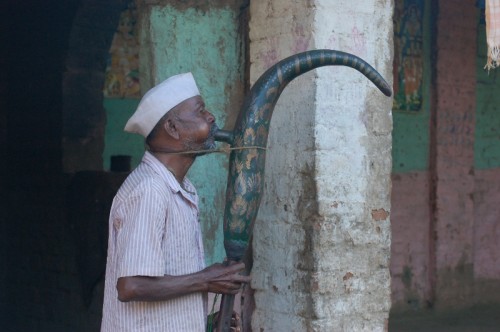
For the next 30 minutes he went into a trance and played such divine music that I felt fortunate to be living on this earth. There was a lilt and a rhythm inbuilt in his music, which made up for the absence of percussion, and he gently swayed to a beat that only he could hear.
When I asked him if he sold these wonderful tarpas that he makes, he said that a musician has to make his own instrument. And not play on one made by another. To him each tarpa is as unique as the individual, and you should make one of your own that reverberates with your soul. Then, and only then, will great music flow out of it.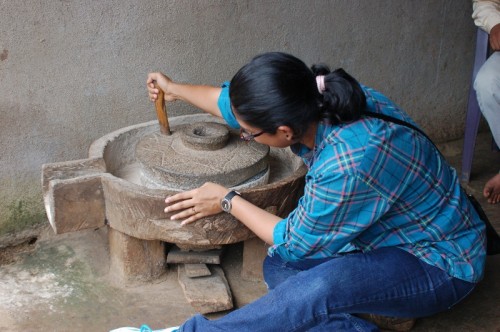
Later in the night, youngsters had gathered at the village square for the Sarvajanik celebrations. There, on the stage, the master of the tarpa got only 15 minutes of fame. The rest of the night was hogged by, you guessed it, item numbers from the omnipresent Bollywood.
The next day, on our way to the waterfall nearby, we had to cross the Jambha river. There we saw two Warli boys frolicking in the water. The older one of them was singing a Warli folk song; and soon his younger friend joined in. It was indeed music to my ears, as I saw a glimmer of hope there for the musical tradition of the Warlis. A fond hope that eventually the tarpa will win over Bollywood. At least in their village.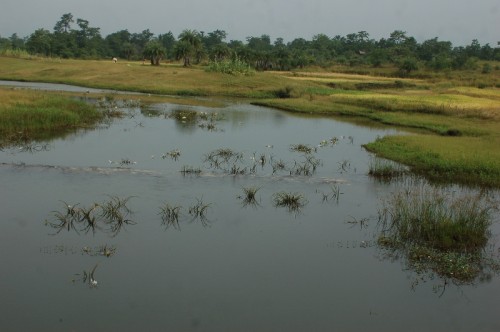
(Click here if you cannot watch it below).
How to get there: Walvanda is about 120 kms from Mumbai. Take the Western Express Highway to Manor. Then take the road to Vikramgadh. Walvanda is 13 kms from here on the Jawhar Road.
Where to stay: At the camp site of Grassroutes. Call +918879477437 for bookings, or log on to www.grassroutes.co.in.
This story made me
- 97
- 121
- 89
- 167
Tell Us More
We bring stories straight from the heart of India, to inspire millions and create a wave of impact. Our positive movement is growing bigger everyday, and we would love for you to join it.
Please contribute whatever you can, every little penny helps our team in bringing you more stories that support dreams and spread hope.






